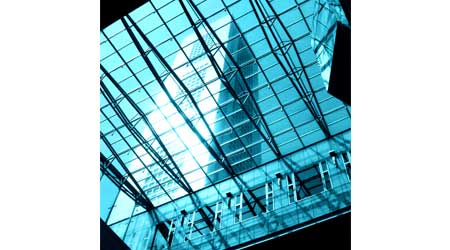Tips for Optimizing Controls to Make the Most of Daylight
Last of a 3-part article on how to implement a thoughtful daylighting controls strategy
As beneficial as daylight can be, several tips for optimizing daylighting controls can accentuate the positives. Benya says it’s important to locate the photocell properly — more of an art than a science, and an art that requires knowledge of how and why you’re using daylight and where that daylight is coming from, whether simply windows, or more advanced measures like TDDs or skylights. “I think people sometimes just put in a photocell and think they’re done,” says Benya. “But that’s not right.”
Another tip for more advanced daylighting controls systems is to be really thoughtful about how you zone the system, says Lagios. “Don’t try to dim fixtures that aren’t candidates for daylighting controls, and you want to make sure to group fixtures so that you don’t have lights next to each other doing wildly different things,” she says. Zoning lights correctly is where the daylighting controls strategy really connects with the lighting controls strategy. This is especially true if you’re taking advantage of the so-called Building Internet of Things and using light fixtures with their own IP addresses.
The primary advantages of employing this technology are two-fold. First, it allows a more rich exchange of data with the rest of your building systems, says Benya. “You can tell how much energy each fixture is using,” he says. As well, the fixtures can report problems and failures.
The second advantage of incorporating IoT is that it allows you to commission your total lighting control system initially, and fine-tune it over time.
“Make sure you have a very good commissioning process,” says Lagios. Daylighting controls cannot be just left alone, they must be re-evaluated on a consistent basis, especially in different seasons, as new occupants occupy new space, and with changes in how that space is being used. It’s important to keep in mind, says Lagios, that daylighting should always be helpful to occupant productivity, not detrimental.
Luckily, new technology like IoT devices and LEDs are making it easier to set up and perform initial as well as ongoing commissioning. “Photosensors and controllers are getting easier to set up and commission,” says DiLouie. “(You can now use) remote calibration options using handheld remotes or from a PC.”
And, as Benya says, advancements in the technology of daylighting controls will continue to play a role in extracting the most possible benefit from natural light: “We’re moving into a future in which we’re understanding how natural light in the workplace and in healthcare environments is therapeutic. We have many reasons to want to use natural light. Indeed, using and harvesting natural light is one of the smartest, easiest things we can do in our buildings.”
Related Topics:














